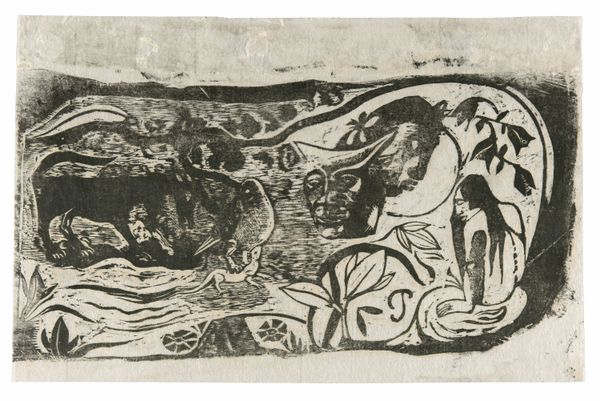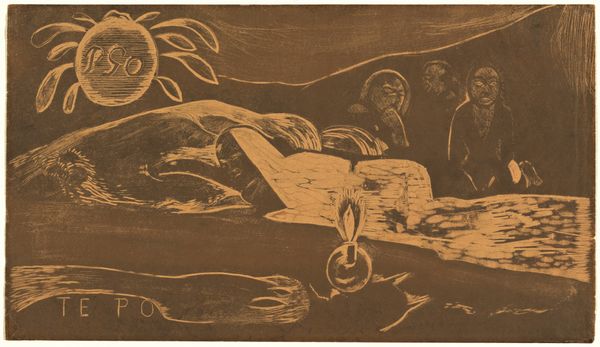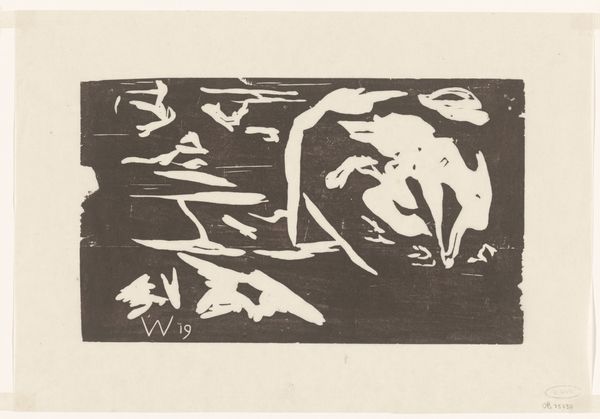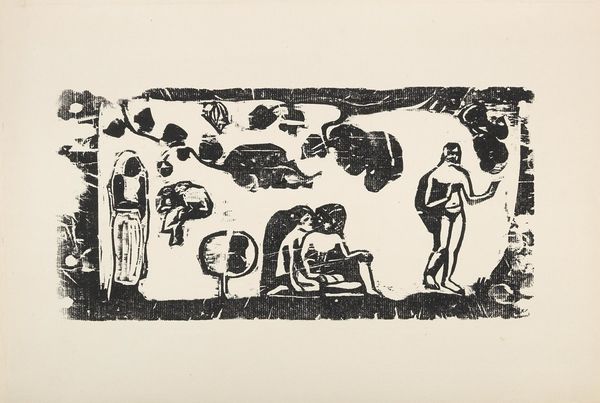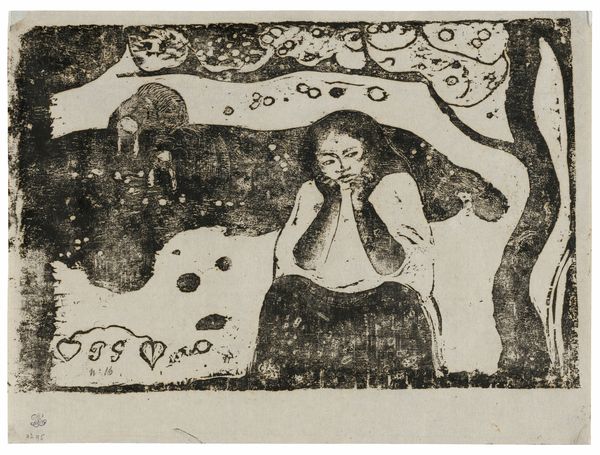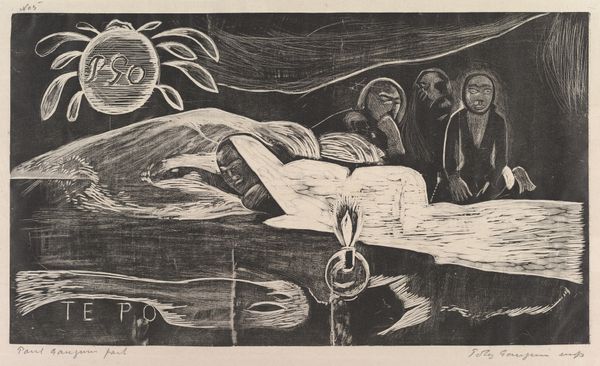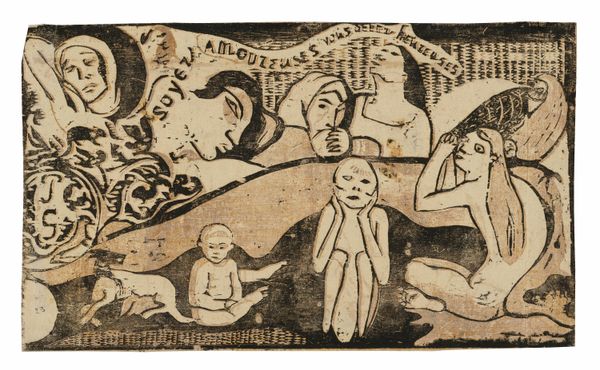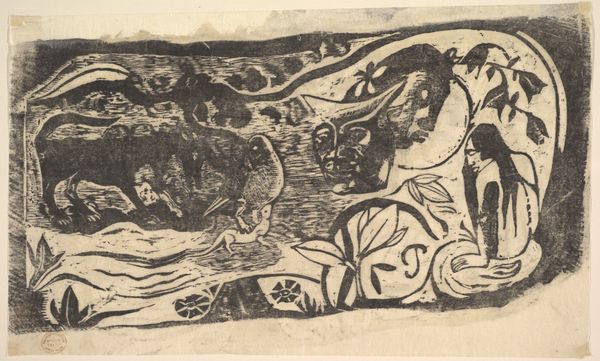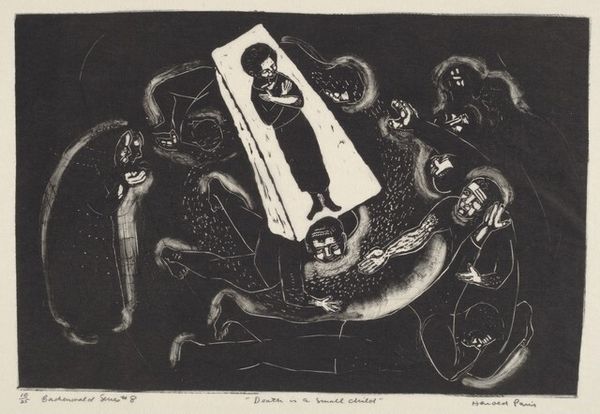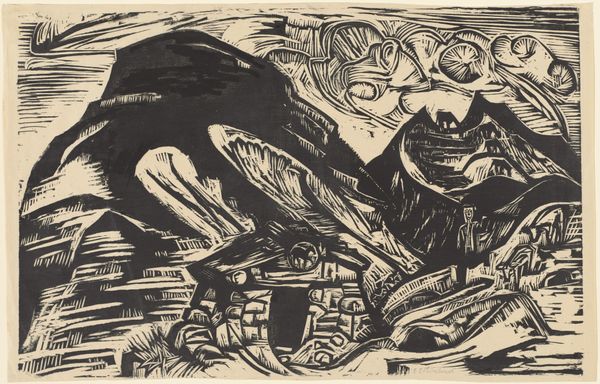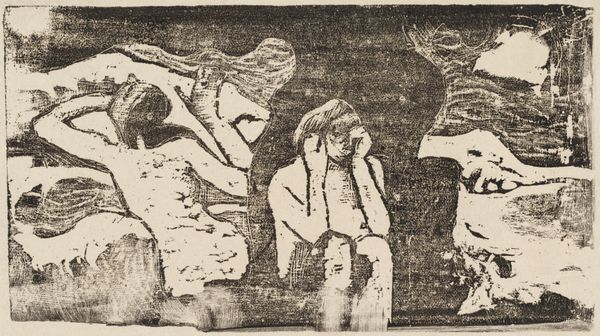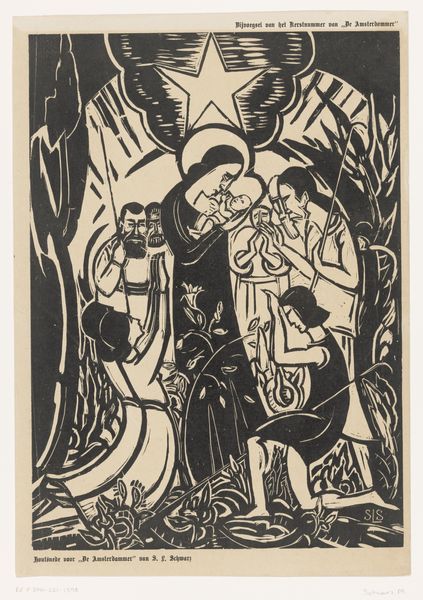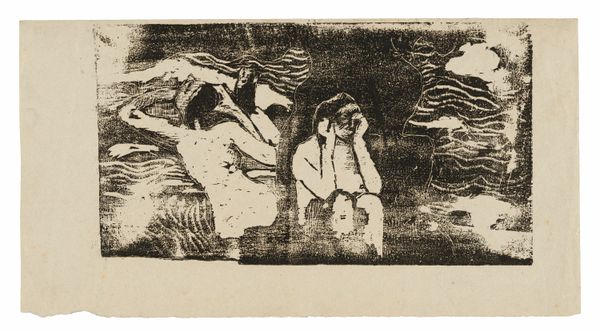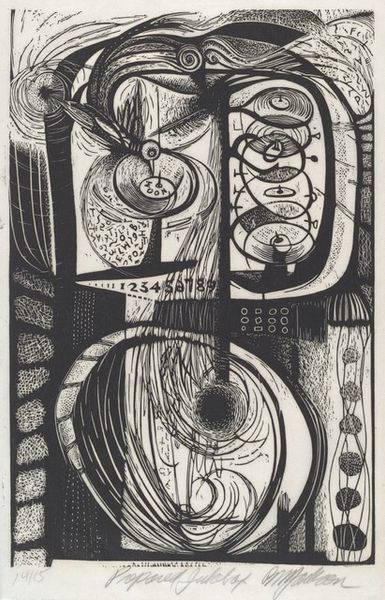
Three People, a Mask, a Fox and a Bird, headpiece for Le sourire 1899
0:00
0:00
drawing, print, textile, paper, woodblock-print
#
drawing
# print
#
textile
#
paper
#
woodblock-print
#
symbolism
Dimensions: 100 × 186 mm (image); 127 × 228 mm (sheet)
Copyright: Public Domain
Editor: This is "Three People, a Mask, a Fox and a Bird, headpiece for Le sourire" by Paul Gauguin, created in 1899. It’s a woodblock print on paper. I’m really struck by how dreamlike it feels, almost like a collection of symbolic figures adrift in a dark space. What do you see in this piece? Curator: It strikes me as an invocation of primal forces, the interplay between the human and the animal, the seen and unseen. Gauguin was deeply invested in exploring the "primitive," though through a lens colored by European anxieties and fascinations. Look at the animal figures, the fox and the bird. How do they interact with the human figures? Editor: They seem to exist on the same plane, not necessarily interacting, but coexisting, like characters in a myth. Is the fox linked to trickery, while the bird represents something spiritual? Curator: Perhaps. And consider the mask. Masks often represent hidden identities, alternate selves. Does the juxtaposition of these elements tell a story? Is it a personal narrative of Gauguin himself or a reflection on broader cultural themes? Editor: That's a good point. The figures appear almost flattened, contributing to the sense of it being more of a symbolic representation than a realistic portrayal. Curator: Absolutely. And remember this was created as a headpiece, something that frames or introduces something else. The title “Le Sourire” — the smile — adds another layer of complexity. Does the combination of these symbols represent a genuine smile, or perhaps something more ironic or melancholic? What does it bring to your mind when you consider its use in relationship to a smile? Editor: Thinking about that, it becomes less of a straightforward, happy image. Maybe a "knowing" smile, one that hints at hidden truths or a darker undercurrent. Thanks, I now see it much more symbolically. Curator: It's fascinating how cultural symbols, viewed through a particular artist's sensibility, can reveal hidden aspects of human experience. These symbols persist across time.
Comments
No comments
Be the first to comment and join the conversation on the ultimate creative platform.
